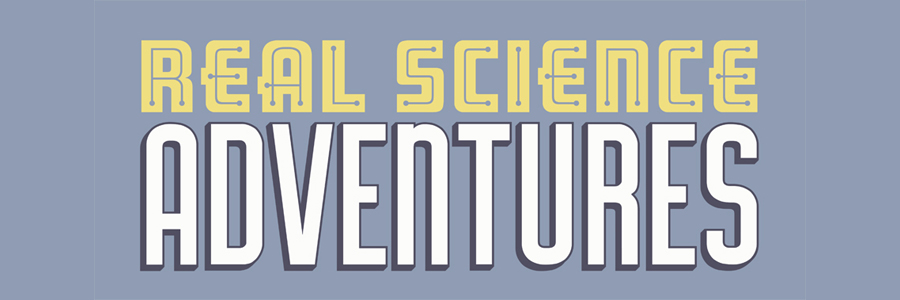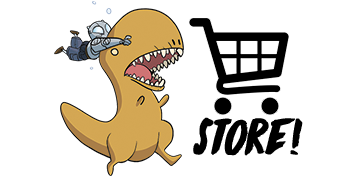So, how do we turn a story structure into an actual story? How do you know where to start? How do you know what happens next? We outline.
A lot of folks get tripped up at this stage. They don't want to outline. They feel like it places unnecessary shackles on their story. They want the freedom to see where it goes. I'm sympathetic, but I believe this reaction comes from a complete misunderstanding of what an outline does.
Part of writing, maybe the best part, is being surprised by what you find in your story by writing it. Outlines are not there to keep you from experiencing these discoveries! In fact, they do the opposite. Outlines empower you to make more and better discoveries as you write. How? They help you to explore different paths through your story and to find your way back if (when) these errant paths don't work out.
Think of your outline as the map of a journey you plan to take and think of your writing as the actual journey. Your outline exists to help you find the best way through unfamiliar terrain. But nothing about that map can stop you from checking out alternatives as you make your way. There are details that the map cannot predict or account for. There are things you will discover or glimpse along your journey that you will want to explore. Do it. If you happen to get lost, or it turns out that super fascinating alternative you thought you saw turns out kinda dull when you actually get there, it's no big deal. Your map will show you how to get back on track.
The structure gives you the shape of your story. It's the big ideas or moments. Your outline is the finer details that tells you how those big ideas and moments flow into one another and create smaller moments connecting everything. Play around with all these ideas. See where else they take you. How else they might flow together. How these different paths help or hinder the impact of the story you're telling. You'll find dead ends. You'll scrap a few outlines that seemed like they were the right one. You'll find the perfect angle through a scene that'll cut a chapter and a half that you really liked.
That's fine.
For ATOMIC ROBO Scott and I brainstorm about the kinds of stories we want to tackle next and we talk about why we’re interested in them or what draws us to them. A plot, a trope, an image, a mood, a historical period or person, a classic sci-fi plot, whatever!
Once we’ve settled on one we’ll hack out some beats that feel like they could be attached to the central idea that got us excited in the first place. And then we figure out how those might be arranged into our usual structure — introducing a conspiracy, discovering it, chasing it, etc. — and how Robo might navigate through these events.
At this point I’ll put together the Broad Strokes Outline which is just a sentence or two describing the main idea and/or development for each issue. The main thing we're checking for here is if the idea still makes sense and sounds fun. This is the foundation and we're checking it for cracks before we build the house.
If it checks out to Scott, then I’ll do a Detailed Outline for each issue by writing out a sentence or two roughly describing what should be happen for each page.
Here’s how that looks for the first issue of ATOMIC ROBO AND THE DAWN OF A NEW ERA...
PAGE ONE
World buildy exposition via Robo with ALAN in their bunker.
PAGE TWO and PAGE THREE
Institute coming along. New Kids incoming.
PAGE FOUR and PAGE FIVE
Bernie heading out on his Volcano Expedition. Robo sending off. Quick library trip.
So, two things pop out.
First, I dunno how that looks to you but I consider this to be the Detailed Outline. That’s enough information to guide me along but not so much information that I’m restricting my ability to play around with how these events transpire while writing the actual script. Your own page-by-page outlines might have more information than my example. Or less! The only thing that matters is that it has the information you need so you know where you are in the story.
Second, the pages are grouped like that so I can track “page turns” for our print editions. The way books are physically constructed, a reader looking at PAGE ONE will only ever see PAGE ONE. But when a reader turns to any even numbered page they'll be able to see the page after it at the same time even if they aren't trying to read ahead. This is why you're supposed to reserve especially interesting (or dramatic or exciting) visuals for the even numbered pages. Some writers will move heaven and Earth to stick by this. Personally, it's something I try to do, but will abandon if it screws up my pacing. Page turns aren’t a big concern for reading comics online but they’re worth keeping in mind because they can enhance the experience of reading the print edition.
Anyway!
Possibly Smart: Outlining the whole series page-by-page gives me a pretty solid idea of how the story’s going to play out from start to finish. Major problems will reveal themselves before I’ve written the first line of dialog! This is especially handy if I come up with something in the latter half that would require changes to any/all previous issues to make sense. Whatever needs to be cut or re-written at this stage is just some notes to myself. That’s easy! Or at least easier than re-writing complete scripts. Yikes.
Possibly Dumb: Something I’ve noticed lately is that my outline for each issue is less accurate than the one before it. Scripts for the first and second issues are pretty close to what’s described by their outlines, but things start getting looser by the third issue and only get worse the further I go. This isn’t a problem as such. The outline is our map, the writing is our journey. Having the map is what gave me the confidence to seek out different paths as I made my way through the material. But it creates extra work as I’m forced to re-outline future issues to account for whatever major changes I came up with while writing the middle of the series. And sometimes, okay pretty much every time, this means rewriting scenes from one or more previous issues to make sure the new continuity works. Sometimes this means re-writing whole issues! And since the whole point of having all these outlines done ahead of time is to Not Do A Bunch Of Rewriting that seems like we're screwing something up.
But I’m Gonna Keep Doing It Anyway: Because it's a fool’s errand to judge the utility of an outline based on how closely it hews to the finished product. Even when I abandon an outline entirely, it proves to have been integral to the script that was written. I'd have never discovered those alternative paths without my maps, and those stories would've been weaker.



